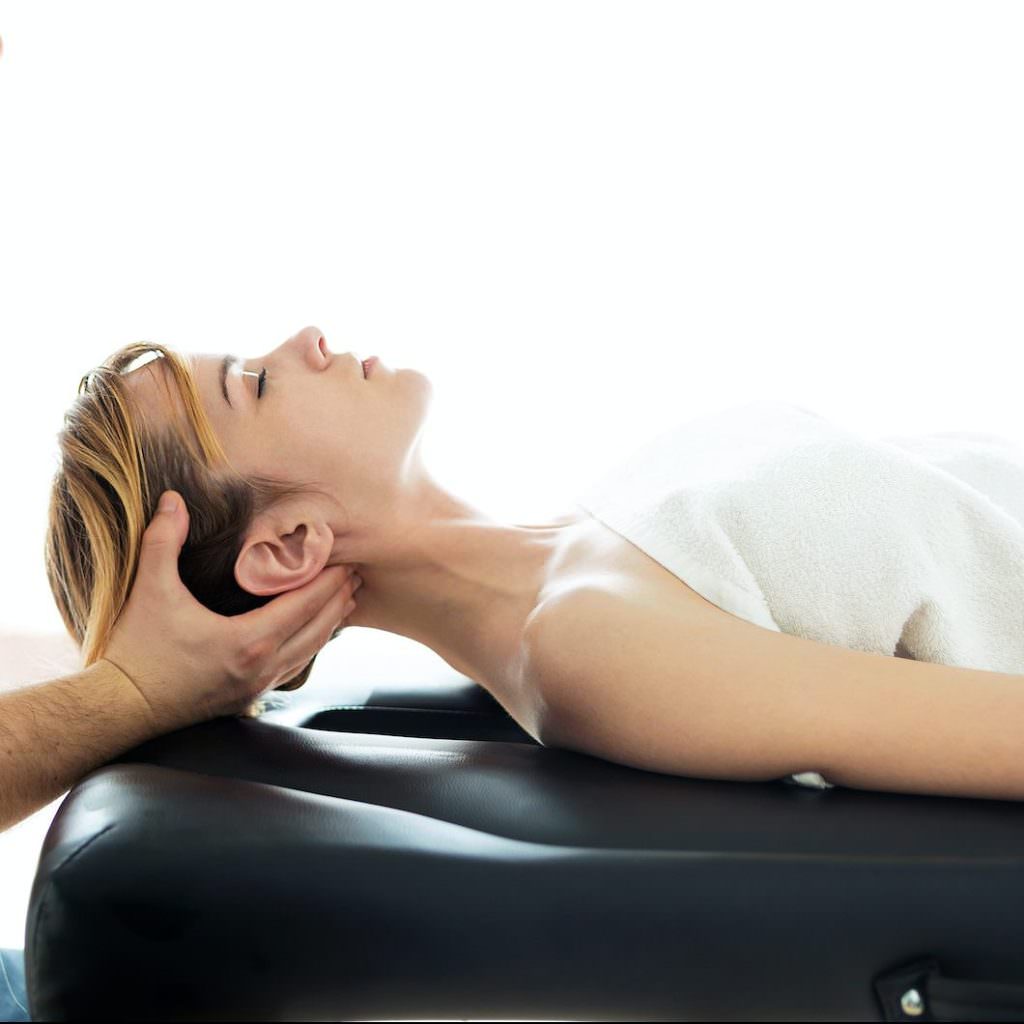Stress, Jaw Tension, and Neck Pain: How Osteopathy Can Help
Stress affects the body in many ways. One of the most common — but often overlooked — is tension in the jaw and neck.
Clenching the teeth, grinding at night, or feeling tightness around the head and shoulders are all signs of this connection.
Osteopathy offers a gentle and effective way to relieve this tension, restore balance, and help the body recover naturally.
Understanding the Connection Between Stress, the Jaw, and the Neck
When you’re stressed, your body reacts as if it’s under threat. Muscles tighten. Breathing becomes shallow. The shoulders lift and the jaw clenches.
Over time, this can create a cycle of tension that’s hard to break.
The temporomandibular joint (TMJ) — also known as the jaw joint — plays a central role. It connects the lower jaw (mandible) to the skull, just in front of the ear.
When the muscles around it tighten, they can affect nearby areas like:
- The neck and upper back
- The face and temples
- The base of the skull
This is why TMJ tension often comes with neck stiffness, headaches, or even ear discomfort.
The Anatomy Behind the Tension
The TMJ and the cervical spine are closely linked. They share muscular and nervous connections.
Key muscles involved include:
- Masseter and temporalis – the main jaw-closing muscles
- Pterygoid muscles – control side-to-side jaw movement
- Suboccipital muscles – small muscles at the base of the skull
- Sternocleidomastoid and trapezius – connect the head, neck, and shoulders
When stress activates these muscles, they can pull on each other and restrict movement.
The result? Jaw discomfort, neck pain, and sometimes even dizziness or tension headaches.
How Osteopathy Can Help
Osteopathy focuses on how the body’s structures — bones, muscles, joints, and tissues — work together. When one area is restricted, others compensate.
An osteopathic practitioner helps restore natural balance and mobility through gentle, hands-on techniques.
For TMJ and neck tension, treatment may include:
- Soft tissue release – relaxing tight muscles in the jaw, neck, and shoulders
- Myofascial release – easing restrictions in the connective tissue
- Cranial or facial techniques – balancing subtle movements of the skull and jaw
- Joint mobilization – improving motion of the upper cervical spine
- Gentle stretching – encouraging relaxation and better posture
These methods help reduce muscle tone, improve circulation, and release strain patterns caused by stress or clenching.
What to Expect During a Session
A session begins with a full assessment. Your practitioner will observe posture, jaw movement, and how the head and neck align.
They may gently palpate muscles around the face, skull, and cervical area. During treatment, you’ll feel light, precise contact — the focus is on restoring comfort and fluid motion, not force.
As tension releases, breathing often deepens, and the jaw may feel lighter or more relaxed. Many patients describe the experience as deeply calming — a physical and mental reset.
Benefits of Osteopathic Care for TMJ and Neck Tension
Regular osteopathic care can help:
- Reduce jaw pain and tightness
- Ease headaches and facial pressure
- Improve neck movement and posture
- Relieve shoulder and upper back strain
- Lower overall stress levels
When the jaw and neck are free to move naturally, the body can function more efficiently. This promotes better breathing, easier swallowing, and even improved sleep.
Everyday Habits That Can Help
Osteopathy works best when supported by small daily changes. You can help your body relax by:
- Avoiding excessive gum chewing
- Taking breaks from screens and phones
- Practicing gentle jaw relaxation (keeping teeth slightly apart)
- Doing light neck stretches
- Paying attention to posture, especially when working at a desk
Breathing exercises and mindfulness can also reduce stress responses and muscle tension.
Who Can Benefit?
You may benefit from osteopathic care if you experience:
- Jaw clicking or tightness
- Morning headaches or jaw pain
- Stiffness at the base of the skull
- Neck or shoulder tension that returns after massage
- Grinding or clenching your teeth (especially at night)
Even mild symptoms can improve with early care. Osteopathy helps prevent chronic discomfort and supports long-term balance.
What Research Shows
Recent research supports the link between jaw tension and cervical dysfunction. A 2023 study in the Journal of Oral Rehabilitation found that manual therapy targeting the jaw and neck significantly reduced pain and improved mobility in people with temporomandibular disorders (TMD).
This suggests that restoring movement in both areas can help relieve chronic muscle tightness and postural strain.
Frequently Asked Questions (FAQ)
1. Is treatment painful?
No. Osteopathic treatment is gentle and adapted to your comfort. Most people find it relaxing.
2. How many sessions will I need?
It depends on your symptoms and stress level. Some people feel better after one or two sessions; others need a short series for lasting results.
3. Can osteopathy help if I wear a night guard?
Yes. Osteopathy complements dental care by addressing the muscular and postural causes of clenching or grinding.
4. Is it safe for children or older adults?
Yes. Osteopathy is safe and gentle for all ages. The practitioner always adapts the touch to each person’s needs.
Take the Pressure Off — Naturally
Stress, jaw pain, and neck tension often go hand in hand. Osteopathy offers a gentle, effective way to release that pressure and restore balance to your body.
If you’re tired of jaw tightness or recurring neck stiffness, book a consultation at Urgent-Osteo Vancouver Clinic today.
Let’s help your jaw and neck feel light, relaxed, and free — one gentle treatment at a time.
